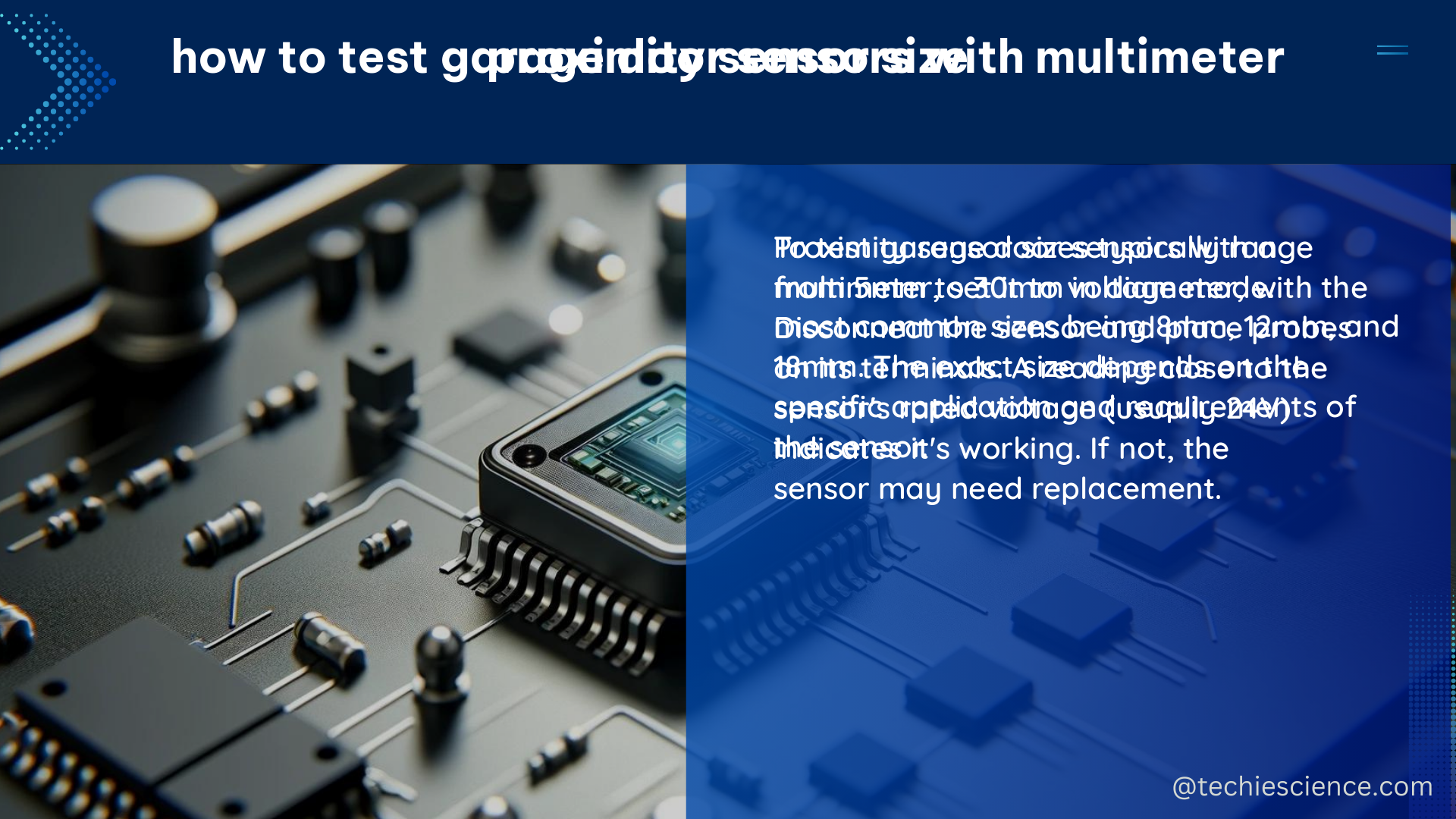Proximity sensor size is a crucial factor in determining the performance and capabilities of a proximity sensor system. The size of a proximity sensor can significantly impact its detection range, accuracy, and sensitivity, making it a critical consideration for various applications. In this comprehensive guide, we will delve into the intricacies of proximity sensor size, providing you with a wealth of technical details and practical insights to help you navigate this essential aspect of sensor design and implementation.
Understanding Proximity Sensor Size and Its Implications
The size of a proximity sensor can have a profound impact on its overall performance. Generally, larger proximity sensors have a larger detection range and can detect objects at a greater distance, but they may also be less accurate and sensitive than smaller sensors. Conversely, smaller proximity sensors may have a smaller detection range but can be more accurate and sensitive.
One study found that the precision of positioning a single object was similar with differently sized objects using a proximity sensor system. This means that using a larger sensor for the same object would not necessarily improve the positioning accuracy. However, the detection range might change with the shape of the sensor. Particularly, increasing the size of the sensor might help detect the same object at a larger distance.
Improving Position Accuracy

The position accuracy of a proximity sensor can be improved by addressing the error caused by contact impedance at the electrodes. This can be done by applying a scaling function, comparing the sensor data with simulation data. Additionally, for single object detection, a more precise fitting model can be used to increase position accuracy.
In one study, the researchers found that the position accuracy of their proposed sensor could be improved by up to 95% by addressing the contact impedance error. They applied a scaling function that compared the sensor data with simulation data, effectively compensating for the error caused by the contact impedance.
Temporal Characteristics and Sensor Performance
The temporal characteristics of a proximity sensor are primarily concerned with the sampling speed of the analog-to-digital converter (ADC), switching speed, and signal frequency. In one study, the imaging frame rate of the sensor was limited to 30 Hz due to software limitations. However, with a more integrated software system, the theoretical frame rate could reach 60 Hz using the current hardware setup.
It’s important to note that increasing the signal frequency can be challenging, as it can affect the overall performance of the sensor. Higher frequencies may also be difficult to handle for portable ADCs, which are commonly used in proximity sensor systems.
Proximity Sensors and Social Contact Patterns
In addition to their primary function of detecting proximity, these sensors can also be used to characterize social contact patterns in rural communities. One study used proximity sensors to quantitatively assess contact patterns in a village in rural Malawi.
The researchers extracted the proximity data from the devices and cleaned the data by identifying anomalies in the recorded information. Participants were asked to remove the sensors overnight, and night contacts were disregarded from the analysis. This allowed the researchers to identify the time periods during which the sensors were not worn by the participants, ensuring the accuracy of the contact pattern analysis.
Factors to Consider when Selecting Proximity Sensor Size
When selecting the appropriate size for a proximity sensor, there are several factors to consider:
- Detection Range: Larger sensors generally have a larger detection range, allowing them to sense objects at greater distances.
- Accuracy and Sensitivity: Smaller sensors tend to be more accurate and sensitive, providing more precise measurements.
- Application Requirements: The specific needs of your application, such as the size of the target objects, the required detection range, and the desired level of accuracy, will guide the selection of the appropriate sensor size.
- Power Consumption: Larger sensors may consume more power, which can be a critical consideration for battery-powered or energy-efficient applications.
- Physical Constraints: The available space and integration requirements of your system may dictate the maximum or minimum size of the proximity sensor.
Conclusion
Proximity sensor size is a crucial factor that can significantly impact the performance and capabilities of a proximity sensor system. By understanding the technical details and practical implications of sensor size, you can make informed decisions when selecting and implementing proximity sensors for your applications.
This comprehensive guide has provided you with a wealth of information on the various aspects of proximity sensor size, including its impact on detection range, accuracy, and sensitivity, as well as strategies for improving position accuracy and addressing temporal characteristics. Additionally, we’ve explored the use of proximity sensors in characterizing social contact patterns, highlighting the versatility of these devices.
Remember, the optimal proximity sensor size will depend on the specific requirements of your application, so it’s essential to carefully evaluate the trade-offs and select the size that best meets your needs. By mastering the intricacies of proximity sensor size, you can unlock the full potential of these powerful sensing devices and achieve superior performance in your projects.
References:
- Sensor System – ScienceDirect
- Proximity Sensor Accuracy and Precision for Single Object Detection – NCBI
- Proximity sensor data to characterize social contact patterns in rural communities – EPJ Data Science

The lambdageeks.com Core SME Team is a group of experienced subject matter experts from diverse scientific and technical fields including Physics, Chemistry, Technology,Electronics & Electrical Engineering, Automotive, Mechanical Engineering. Our team collaborates to create high-quality, well-researched articles on a wide range of science and technology topics for the lambdageeks.com website.
All Our Senior SME are having more than 7 Years of experience in the respective fields . They are either Working Industry Professionals or assocaited With different Universities. Refer Our Authors Page to get to know About our Core SMEs.